Managing digital services
At a time when the market is becoming increasingly more digitalized, organizations need to transform digitally. Digital transformation is all about innovating and modernizing or, from nothing, starting up business chains in which IT solutions play a vital role. To transform digitally and remain competitive, organizations acquire the best digital products and services on the market, and combine them with their own services. Technological developments like the cloud, AI and robotics offer new opportunities and are essential to a digital transformation. Internally, the transition to modern ways of working is based on Agile and DevOps. In addition, there is an existing IT landscape into which new possibilities and developments need to be integrated. This makes the services production chain (including IT services) within organizations more diverse and more complex. Governance of the chain is crucial to end-to-end service delivery. In essence, governance involves connecting the people who work together in the production chain. A number of core tasks can be identified within governance.
The three core tasks of Governance
The IT production chain – the delivery of end-to-end IT services – is usually split. The classic division is between ‘change’ and ‘run’. A second important division is the one between demand (what is required) and supply (what is available, which is often partially the responsibility of external suppliers). Service integration and management (SIAM) is used as a mechanism to boost collaboration between internal and external suppliers. Every supplier in the production chain has their own way of working and their own framework aimed at functioning optimally. For example, ITIL®, SIAM, Agile and IT4IT. The purpose of a governance function is to create a bridge between all the parties involved, from change to run, and from demand to supply.
The strategic objectives of the IT production chain are known and are translated into a service and sourcing portfolio supported by a long-term plan.
Build up the production chain out of various capabilities or partial services based on the services portfolio (design and implementation).
Get internal and outsourced services – including partial services – to operate together optimally in the production chain. Integration also includes service-integration (SIAM).
IT Governance as an integral part of the value chain
Quint regards the IT production chain as an integral part of the value chain of a customer rather than as an IT value chain in itself that delivers services to the business. This means that governance of all parties involved in the production chain must take place. Internally, this means the business, agile teams, DevOps teams, the centralized IT function and, externally, it involves suppliers. Governance is therefore no longer just about the IT function and external suppliers. A vision on governance thus arises that is fundamentally different to the classic way of thinking in terms of demand and supply. Governance covers the entire production chain and its starting point is the delivery of value to the business process and the chain.
“The production chain of (IT) services within organizations is becoming more diverse and complex. Governing the chain is crucial for qualitative end-to-end services.”
Independent advice as a foundation
Our best practices involve the structure of the organization, processes and roles, and people (behavior and training). In addition, the best practices also include an architecture/platform (that we can implement for our clients) based on which governance, SIAM, GRC (governance, risk & compliance), chain monitoring and cloud management are automated. Applying these best practices leads to a modern environment and a platform for governance with transparent IT governance that is automated (based on IT4IT architecture and platforms) and where SIAM practices are used to ensure collaboration between the parties across the entire production chain.
Together with you, in a series of workshops, we determine your future governance positioning and governance strategy. To this end, we explicitly focus on the Govern, Orchestrate and Integrate aspects of the framework. We determine the scope of the new governance function and how it relates to existing contracts, suppliers, legacy services and new developments.
Based on the vision, we further map the components of the production chain that have the highest priority, and we determine what changes have to be made. Such changes could involve supplier contract management, automation (IT4IT), governance aspects (risk & compliance), SIAM, target operating model (e.g. for embedding Agile, DevOps, run organizations and cloud management).
The roadmap is implemented and the change organization takes the lead in implementing the necessary improvements. This involves an organizational change process that takes people, processes and technology through the Govern, Orchestrate and Integrate aspects of the framework. Together with you, we continue modernizing and updating your governance.
Contact Quint
Address
C-91, 92 3rd Floor, Sector 2, Noida, Uttar Pradesh 201301
info@quintconsultingservices.com
Phone
+91 98 1885 5635








